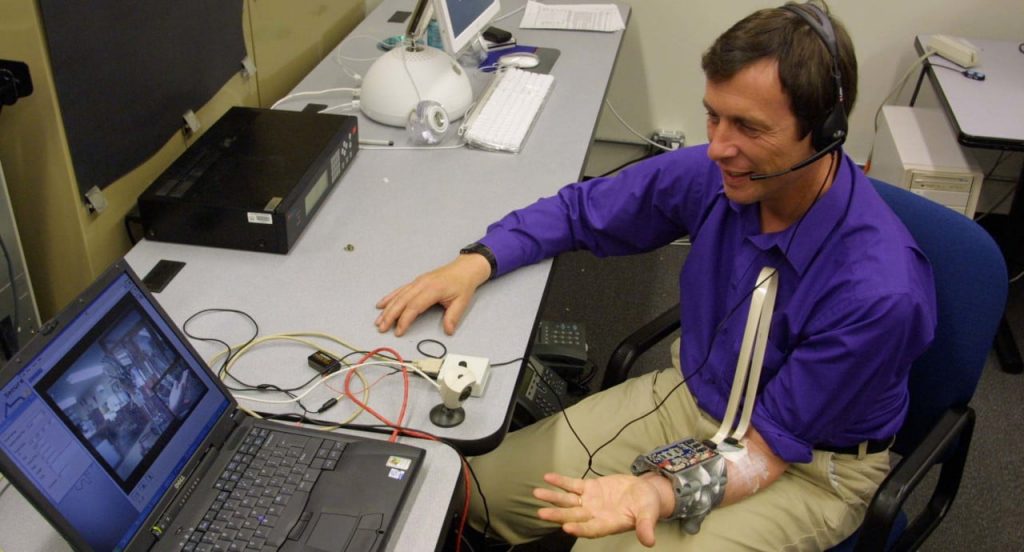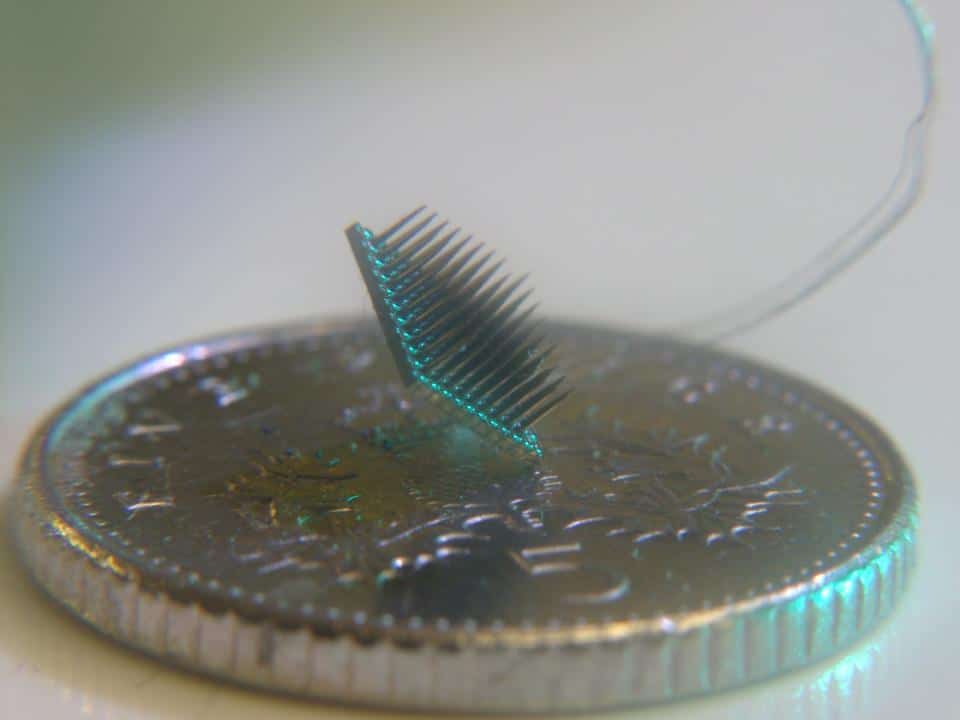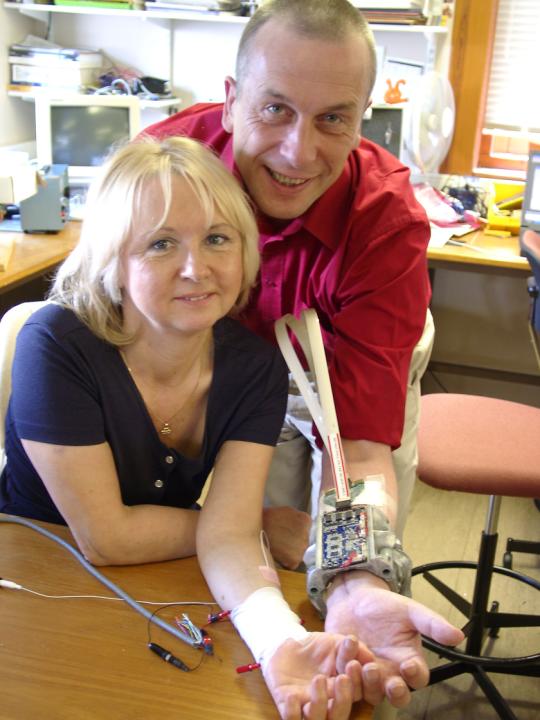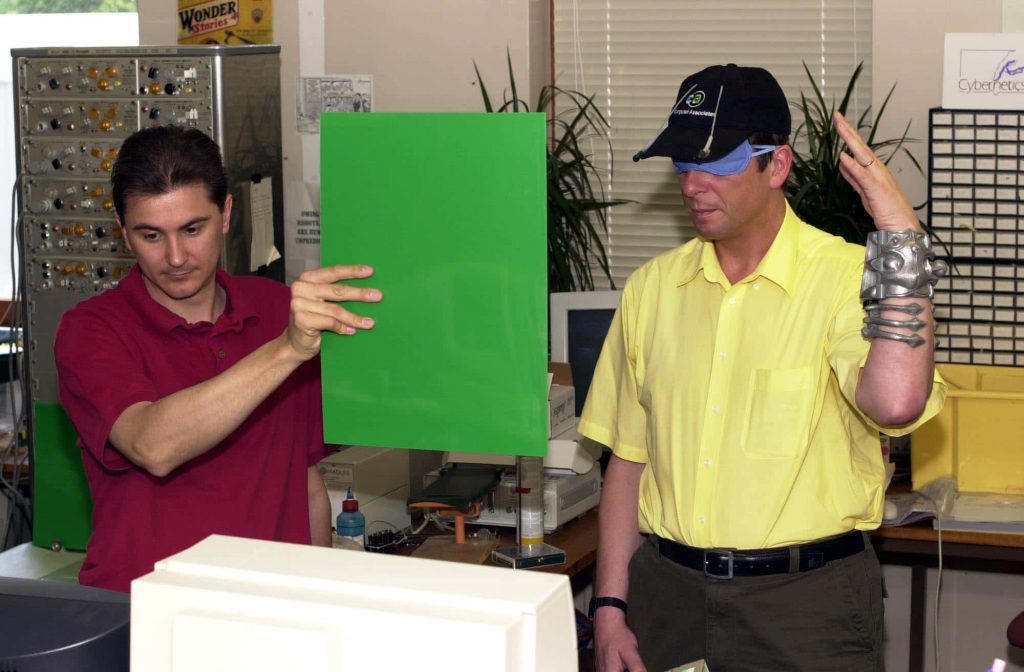What does it mean to be the world’s first cybernetic man? How is this powered and how does it function?

What’s the difference between Project Cyborg 1.0 and 2.0? What are the pros and the cons?
Project Cyborg 1.0 involved a Radio Frequency Identification Device being implanted in my left arm. With this in place the computer in my building could track my position at different points. As I walked down the corridor the lights came on. As I walked towards my laboratory the door opened automatically. When I came through the front door I heard “Hello Professor Warwick”.


The implant of 98 was purely to identify me to the computer in my building. I was the first human to experiment with it. The same technology is now used to pay for travel in Sweden for example and a number of other applications. But I agree that it has not yet become a major new wave. I feel that ethically society is still a little wary of it. But also a vital new application has not yet been enabled. One potential example of this would be if a country allowed such implants as extra passport information, such that you can get to the front of passport queues when travelling. With such an application, where the benefits could be useful, would dramatically increase the number of recipients. Yes people have privacy concerns but I believe that these tend to disappear when an application is particularly useful.
The Institute of Physics selected you as “one of only 7 eminent scientists to illustrate the ethical impact their scientific work can have”. How would you define your scientific work: What’s its main purpose and how it helps the technological advances of humanity?

Photo: David O’Neil
Partly it is to do with improving therapeutic methods for the treatment of neurological problems. However it is also to do with enhancing humans beyond normal human abilities – new senses, better communication, better memory, etc etc. I have also put biological neurons into a robot body, thereby giving a robot a biological brain – could use human brain cells but typically the brain cells come from rats. All of these things raise ethical issues, particularly the human enhancement. As we are dealing here with ‘intelligence’, making humans super-intelligent may not be acceptable to everyone.
What are the latest impressive innovations in nanotechnology?
I particularly like some of the recent developments in nanorobots. These could revolutionise medicine when such robots travel around the body, applying chemicals and possibly carrying out minor operations. I think it is time to test some of these out in humans now to see what is possible. I think they could also be used to apply electrical pulses – this could be useful when it is remembered that the nervous system and brain operate electrochemically. It is quite possible therefore that such robots could be used to apply electrical pulses to remove pain. No need to take aspirin any more!
Some of your research involves intelligent computer methods in favor of biomedical engineering. Could you tell us about the work on this project, what were the main tech difficulties?

How far can AI go and what will happen with the controversial culturing of human neurons?

How do you picture the technological world and its robots of the future?
The merging of humans with technology is an exciting prospect. It is already giving rise to many new therapeutic treatments. In the future there will be many more. Electronic forms of medicine will become much more prevalent. But even more interesting is the possibility of human enhancement and the possibilities of a much more powerful means of communication in terms of emotions, feelings, colours and thoughts. Our present means of communication – speech – may well become obsolete. Also, we will be able to experience a much broader range of sensory input instead of missing out on most of what is going on around us, which is the present situation. With this technology your brain and body do not have to be in the same place. In fact your body does not have to be arms, legs and so on but rather could be buildings or vehicles. And isn’t it better to link your brain with AI and have it acting for you rather than against you? It’s a whole new world ahead of us.








